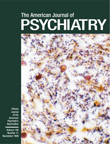The first edition of The Battered Child, edited by Drs. C. Henry Kempe and Ray E. Helfer and published in 1968, was a monumental contribution to the study of the mistreatment of children, a landmark document that played a major role in heightening awareness of child abuse in health care professionals, social service agencies, and society as a whole as well as encouraging its recognition and the treatment of its consequences. Each subsequent edition has shared the accumulating knowledge of those who struggled to address this crucial area of concern, chronicled ongoing developments in the field, and commented on our society’s and our institutions’ response to efforts to address the mistreatment of children. The fifth edition, edited by Mary Edna Helfer, Ruth S. Kempe, and Richard D. Krugman, continues this tradition.
Maintaining the multidisciplinary model of previous editions, the contributors include representatives of the disciplines of psychiatry, psychology, pediatrics, law, social work, sociology, pathology, anthropology, and law enforcement, among others. The result is a far-reaching and comprehensive text that offers very good to superb coverage of most major areas in the study of child maltreatment. Thirty chapters are divided into four sections. The first, Context, discusses child maltreatment in terms of historical, cultural, economic, legal, and psychodynamic considerations. The remaining sections are Assessment, Intervention and Treatment, and Prevention.
No comparable text offers an equivalent compendium of useful information. The fifth edition of The Battered Child remains a vital and vigorous work, an indispensable resource for those of all disciplines who work with children and with the social, medical, legal, and societal systems that bear on their well-being. The strength of The Battered Child is the impressive wisdom of its authors and editors in addressing major issues with clarity and compassion. As in any multiauthored work, there is some variation in quality, and inevitable areas of redundancy are encountered. Also, although most chapters can stand on their own as resources and give concrete advice, in some instances the authors refer the reader elsewhere for crucial material and information.
Among the contributions, I was especially impressed by David P.H. Jones’s “Treatment of the Child and the Family Where Abuse or Neglect Has Occurred.” It is exceptionally rich in clinical insights and practical advice and should be a core reference for students in pediatrics and the mental health disciplines. Kenneth Wayne Feldman’s chapter, “Evaluation of Physical Abuse,” is a masterful summary, of great use for pediatricians and emergency ward personnel. Robert H. Kirshner’s “The Pathology of Child Abuse” is a thoughtful and thought-provoking summary of this subject. Several other chapters are equally outstanding and illuminating, especially those which explore the changes in national and agency policies toward matters of child abuse over the last decades.
Despite my overall high regard for this book, and my unequivocal recommendation of The Battered Child, I took note of a number of concerns that might be less than satisfactory to some psychiatric readers. As noted, this is a book of tremendous wisdom, but many of its chapters fall short of describing cutting-edge advances, and its psychiatric elements are occasionally less than comprehensive. For example, the psychobiology of the trauma response receives short shrift, psychopharmacology is mentioned only in passing, several modern schools of therapy are not considered thoroughly, matters of psychiatric diagnosis (even posttraumatic stress disorder) are not addressed in depth, and modern studies of the relevance of dissociation to trauma are not explored. In addition, current concerns about the accuracy of memories of childhood trauma and the accuracy of the accounts given by child witnesses (rather relevant and hotly debated contemporary concerns) deserve more comprehensive treatment than the passing notice that they receive. Some remarks on dissociative disorders are unfortunately dismissive and discordant with the generally objective tenor of the book.
The Battered Child is an overall excellent text that continues to merit a place of respect on the bookshelf of every professional and policymaker in every discipline involved in the protection and care of children. However, for an in-depth contemporary psychiatric perspective on the consequences of child mistreatment, the reader must turn elsewhere.

